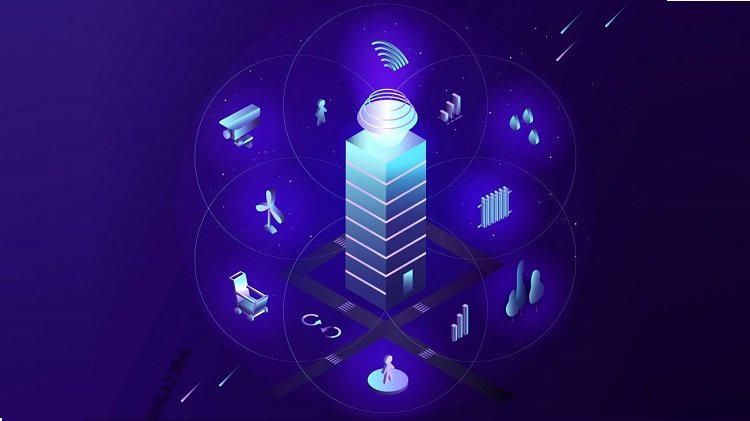
Honeywell has released its predictions for emerging trends that will help shape building operations and technologies in 2023 and beyond. Top experts at Honeywell revealed insights on opportunities to make buildings more sustainable, safer and occupant focused.
Honeywell’s predictions for 2023 include both ongoing and burgeoning trends:
The acceleration of the ‘Electrify Everything’ movement.
Communities across the United States recently began prohibiting new natural gas hookups,i and major cities are considering pro-electric legislation, primarily because a building that burns gas or oil to produce heat or hot water is unlikely to meet carbon reduction goals. To help advance the replacement of fossil-fuel burning HVACs and water heaters, the Inflation Reduction Act includes a $250 million investment for the domestic manufacturing of electric heat pumps for both commercial and residential use. As building owners face increasing pressure from stakeholders and regulatory agencies to curb energy consumption and reduce their facilities’ carbon impact, the electrification trend will accelerate.
“An all-electric building requires not just a viable sustainability plan but also a smart controls strategy, which starts with establishing realistic baselines of current energy performance and taking a hard look at existing infrastructure including supply and demand side power,” said Udaya Shrivastava, vice president and chief technology officer, Honeywell. “It also requires creative thinking, investment in ready now technologies and a holistic effort across the organization. Making these changes may seem prohibitively expensive, but solutions exist that can measurably cut operating expenses and help reduce carbon emissions.”
Cybersecurity embedded and integrated into digital innovation.
As the Internet of Things continues to merge operational technology (OT) and information technology (IT) systems – and cyberattacks increase in frequency as well as sophistication – advanced AI/ML-enabled cybersecurity will become foundational to the design of digitalized building technology systems. At the same time, the shortage of cybersecurity professionals will likely remain a challenge.
“Generally, there still remains a lack of understanding on the importance of hardening OT infrastructure and having proper protocols in place in the case of an incident,” said Mirel Sehic, vice president and general manager, Buildings Cybersecurity, Honeywell. “Cybersecurity starts with technology development, as digitalization continues, engineers and product development teams need to take a security and privacy by design approach.”
Dynamically responsive buildings will be possible.
Building controls have traditionally used setpoints that operate on the assumption that every space is 100% occupied, which is no longer the norm due to an uptick in hybrid workforce. The 2022 Global Status Report for Buildings and Construction found that the building and construction sector accounted for 34% of energy demand and 37% of energy and process-related CO2 emissions in 2021. Building management systems will increasingly leverage AI/ML algorithms to optimize both energy efficiency and occupant well-being, which will no longer be viewed as mutually exclusive priorities. These algorithms can build sophisticated models that reveal hidden energy waste as they weigh conditions and demand against current occupancy, weather conditions and utility pricing.
“It’s become imperative for building owners to make meaningful, near-term change in their carbon impact,” said Manish Sharma, vice president and general manager of Sustainable Buildings, Honeywell. “To do this, they need better data about their operations. Given the heightened awareness of, and investment in, sustainability, it’s critical for a company to know and communicate to stakeholders how its facilities are optimizing energy baselines to ultimately reduce their carbon footprint, without impacting the occupant experience.”
Cities will look to build energy resilience into operational plans.
As extreme climate and weather events occur more frequently,vi energy resilience will continue to gain attention. Cities and communities will need solutions that help them better respond to power outages, especially where they affect critical infrastructure such as hospitals and traffic control systems. Microgrids and battery energy storage systems that leverage real-time, adaptive control strategies will help cities continue to provide essential services in the wake of disasters.
“In 2023, we can expect to see significant public investment in community resilience particularly in the United States, supported in part by the $1.2 trillion in federal fundingvii from the Infrastructure Investment and Jobs Act,” said Matthew Britt, general manager, Sustainable Cities and Communities, Honeywell. “Communities that embed energy resilience programs into their sustainable smart city initiatives, will be better prepared to mitigate power outages, improve their operating costs, while supporting their sustainability initiatives.”
These trends collectively embody a common theme: Technology is rapidly becoming integral to every facet of building operations. Whether it’s helping to help reduce carbon impact, defend against cyberattacks, optimize both energy performance and occupant well-being, or make communities more resilient in times of crisis, it can provide a competitive business advantage as well as help reduce operating expenses.